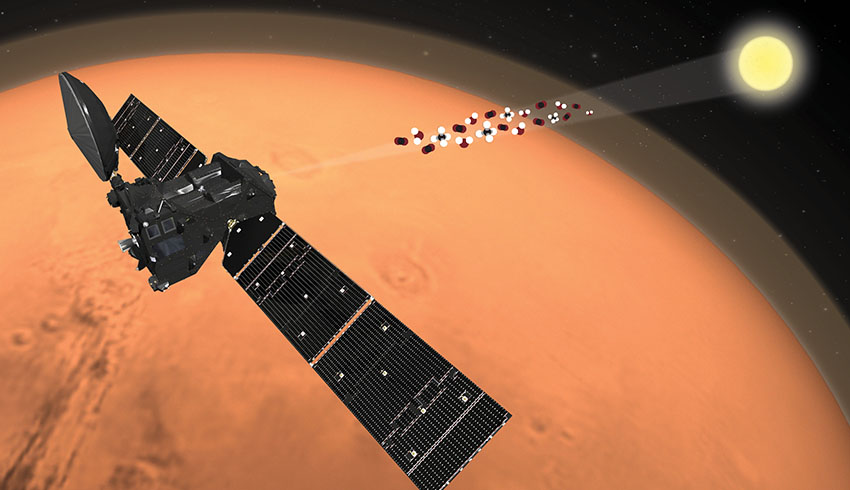After completing a complex series of manoeuvres during 2017, ExoMars TGO is now orbiting the Red Planet every two hours, collecting scientific data from NASA’s surface-bound rover and lander, and relaying it back to Earth. At the same time, the orbiter is gathering its own data on the planet’s atmosphere, water abundance and alien surface.
More than a year before Rosalind even lifts off from Earth’s surface, flight dynamics experts at ESA’s ESOC mission control centre have formulated a long-term plan to ensure ExoMars TGO can communicate with the new ESA rover and surface platform, contained in the entry, descent and landing module.
Slight changes to a spacecraft’s orbit have a large effect over time, so while the upcoming manoeuvres will only slightly alter TGO’s speed, it will be in the right position to communicate with the then-incoming rover by 2021.
Mars’ uneven gravity field means that TGO’s orbit ‘wanders’, so it gradually rotates around Mars over time, continuing until it completes an entire rotation around the planet every four and a half months.
To keep in touch with the descent module as it enters the Martian atmosphere, descends and lands upon its surface, TGO’s orientation needs to change.
Three manoeuvres in the month of June will alter TGO’s speed, twice by 30.9 metres per second and one final small change of 1.5 metres per second, bringing it slightly closer to the Martian poles.
If teams at mission control were to leave ExoMars TGO in its current orbit, without performing any manoeuvres, Mars itself would later get between the orbiting spacecraft and the new Mars explorer.
Without phasing the orbiter with the Mars rover, the two craft would remain invisible to each other at the crucial moment when the rover descends to the surface.
Not only does the foresight and long-term planning of mission experts ensure communication is maintained between two of ESA’s most important Mars missions, it saves fuel – a huge amount of which would be needed to get TGO in the right position in the weeks or even months before the ExoMars rover's arrival.
ESA has demonstrated expertise in studying Mars from orbit, now it is looking to secure a safe landing, to rove across the surface and to drill underground to search for evidence of life. Our orbiters are already in place to provide data relay services for surface missions. The next logical step is to bring samples back to Earth, to provide access to Mars for scientists globally, and to better prepare for future human exploration of the Red Planet.

